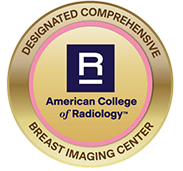3D Mammography at Rye Radiology Featured in Patch
Catching More Cancer with 3D Mammography at Rye Radiology
The new machine helps doctors find invasive cancers earlier and more frequently
By Liz Giegerich published in the Rye Patch.
Staring closely at a 3D mammogram of a dense breast, Dr. Diane LoRusso can just make out a white spider-like mass that looks only slightly different than the other white streaks and dots around it. If she had been looking at a 2D mammogram of the same breast, the spider-like mass, which will turn out to be cancer, would be essentially impossible to see, she explains.
Since Dr. LoRusso brought 3D to Rye Radiology last July, she has been amazed by the new technology and happy to offer the new, more effective screenings to her patients. The FDA approved 3D on Feb. 11, 2011 and Rye Radiology was the first facility in Westchester County to offer the break-through technology last year. They are still one of the few facilities that offer 3D.
“I never thought that in my professional life I would see such a huge improvement in mammography,” LoRusso said. The doctor is a founding member of the current Rye Radiology. She has been practicing there for 38 years and worked as Chief Resident in diagnostic radiology at Albert Einstein College of Medicine before that.
The 3D digital imaging takes 10 seconds and finds 40% more invasive breast cancers than traditional 2D mammography alone. It improves radiologists’ ability to detect potential breast cancers and can help them distinguish harmless abnormalities from real tumors. This means fewer biopsies, fewer false positives and less additional diagnostic work for many women.
In the year since Rye Radiology has had the new 3D machine, many patients have opted to pay the additional $100 it costs to have 3D imaging, LoRusso said. Insurance covers the traditional work, but not the 3D.
The new machine works much like the 2D machines. The 3D imaging is performed simultaneously during the same compression as standard mammography and with no noticeable difference in the experience for the patient. The compression on the 3D machine is actually more comfortable than it was with the standard machine, LoRusso said. The 3D images are much more detailed and allow radiologists and doctors to view the breast like they are turning through pages in the book.
This helps most with dense breasts rather than fatty breasts, LoRusso said. Fatty breasts have less of the dense tissue, which come up as white formations in the images. Because cancer also shows up as a white formation, it blends in more in dense breast images. In a fatty breast, there is much less “white stuff,” which makes it easier for a radiologist to see any abnormalities.
Despite the breakthrough technology of 3D, LoRusso still recommends that all dense breasted women have an ultrasound, which is more detailed than 3D. The MRI is the best tool and even that is not 100 percent guaranteed, she said.
When Rye Radiology first got the 3D machine, LoRusso gathered her entire staff together to tell them about it and share her excitement.
“I got all choked up when I was talking to them because this is very important to me and very important to my patients.”
LoRusso recommends all women without a high biological risk of having breast cancer to start getting mammograms at the age of 35 and then every year after 40. Those with a hereditary risk should consult their doctors for the best time to start getting mammograms.
The doctor encourages all women to take control and be educated about their options. You can go anywhere for a mammogram, it does not have to be where your doctor sends you. She also urges women to remember to give themselves regular breast exams and that the best time to do it is right after menstruation.
“Women should know they have a choice and it is their bodies and they have to decide how they want to take care of themselves.”
Read the articles at:
http://rye.patch.com/articles/catching-more-cancer-with-3d-mammography-at-rye-radiology

